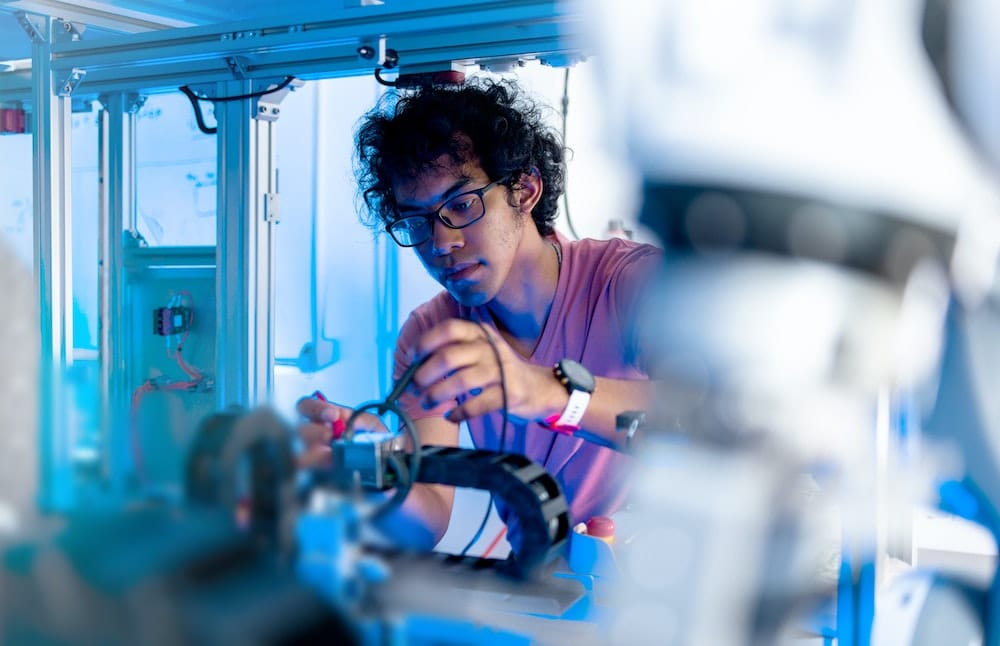What Is the Impact of Collaborative Robots (Cobots) in Small and Medium-Sized Enterprises (SMEs)?

Understanding the Rise of Cobots
As we advance further into the 21st century, the role of robots and automation in the workplace continues to evolve and expand. As you delve into the intriguing world of robots, one particular player stands out – the collaborative robot, or cobot. Unlike traditional robots, cobots are designed to work alongside their human counterparts, rather than replace them. They bring about a unique harmony of human intuition and robotic precision, thus revolutionizing the way work is done.
Google’s search trends show a sharp rise in the interest in cobots, especially in the context of small and medium-sized enterprises (SMEs). SMEs form the backbone of many economies, contributing significantly to job creation and economic growth. Hence, the adoption of cobots in SMEs has a substantial ripple effect on the wider socio-economic landscape.
Lire également : What Advances in Smart Textiles Are Enhancing Performance Wear for Athletes?
Cobots in SMEs: Fostering Innovation and Productivity
Cobots are purposefully built to share a workspace with humans, thus offering a unique blend of safety, efficiency, and productivity. This collaboration allows for seamless interaction, paving the way for innovative workflows and processes. Cobots can handle repetitive, mundane tasks, allowing their human counterparts to focus on complex, creative tasks, fostering an environment of innovation.
For SMEs, the adoption of cobots can bring substantial benefits. In an industrial setting, cobots can increase production speed and precision, reduce errors, and improve the overall quality of products. They can also carry out tasks in hazardous environments, reducing the risk to human workers.
Lire également : Dive into the thrills of unboxing your wish mystery box
The Adoption Challenge: Barriers and Opportunities
While the benefits of cobots are clear, their adoption by SMEs faces several challenges. These range from high initial investment costs, lack of technical expertise, and fears of job displacement among workers. The manufacturing industry, which is predominantly constituted by SMEs, faces a particular challenge due to the nature of their production processes and their tight operating margins.
However, overcoming these challenges is not insurmountable. With a strategic approach and targeted support, SMEs can effectively integrate cobots into their operations. Government initiatives, industry collaborations, and research institutions can play a critical role in promoting the adoption of cobots. By providing financial support, technical training, and showcasing successful case studies, these entities can help SMEs overcome the barriers to cobots adoption.
The Role of Cobots in the Future of Work
We are at a critical juncture where technology is redefining the future of work. As cobots become more sophisticated, their role in the workplace will continue to grow. They can revolutionize SMEs by automating tasks, reducing costs, and increasing productivity. But beyond this, cobots have the potential to improve job quality and worker satisfaction.
As cobots take over routine and physically demanding tasks, human workers can focus on more complex, creative, and fulfilling roles. This shift can lead to improved job satisfaction, increased motivation, and a more innovative and dynamic working culture. Cobots, therefore, have the potential to redefine the balance between human and machine, creating a more harmonious and productive working environment.
Conclusion
The intersection of human and machine brings about a unique synergy that can drive SMEs into a new era of productivity and innovation. The adoption of collaborative robots, or cobots, is an exciting development that can bring significant benefits to small and medium-sized enterprises. While there are challenges to overcome, the potential opportunities far outweigh the obstacles. As we continue to navigate the future of work, cobots will undoubtedly play an integral role in shaping the landscape. With the right strategies and support, SMEs can harness the power of cobots to enhance their operations and drive their success into the future. As you embark on this journey, remember one thing: the future is collaborative.
Overcoming Adoption Challenges: The Role of Government and Research Institutions
The advent of collaborative robots or cobots carries a significant potential to transform the operations of small and medium-sized enterprises (SMEs). But the road to wide-scale adoption is not without challenges. SMEs, particularly those in the manufacturing sector, grapple with barriers such as high initial investment costs, lack of technical expertise, and concerns about job displacement.
The high initial investment required for industrial robots can be a significant obstacle for SMEs operating on tight budgets. Traditional industrial robot systems require extensive programming and often need to be cordoned off for safety, increasing the overall setup cost. However, cobots are designed to work alongside human workers, mitigating these costs and making them a more affordable option.
Moreover, adopting collaborative technology requires a level of technical expertise that many SMEs might not possess. Cobots are typically easier to program than their traditional counterparts, but integrating them into existing workflows still requires specialized skills. This is where research institutions and initiatives, such as Google Scholar, can play a vital role. They can provide the necessary training and resources to help SMEs harness the power of artificial intelligence and automation effectively.
Finally, the fear of job displacement is also a significant hurdle. Despite the promise of cobots designed to assist rather than replace human workers, many employees might still fear job loss. Clear communication about the role of cobots in enhancing, not replacing, human effort is crucial to address these concerns.
Cobots as Catalysts of Innovation Adoption in SMEs
In the face of these challenges, the adoption of cobots offers significant opportunities for SMEs. Companies like Doosan Robotics are at the forefront of robot innovation, offering cobots that are safe, flexible, and easy to use. These advantages make them a suitable choice for SMEs looking to boost productivity and improve work conditions.
Adopting collaborative technology can spur innovation in SMEs. By taking over repetitive tasks, cobots allow human workers to focus on creative problem-solving and strategic decision-making. This fosters an environment of innovation adoption, wherein new ideas and processes can be explored and implemented more freely.
Moreover, cobots can carry out tasks in hazardous environments, ensuring the safety of human workers. In an era where worker wellbeing is increasingly important, this is a significant advantage. Cobots can also carry out tasks with a high level of precision, reducing errors and improving the overall quality of products.
Finally, the use of cobots can lead to substantial cost savings. By automating routine tasks, SMEs can save on labor costs and improve efficiency.
Conclusion
As we navigate the future of work, the impact of collaborative robots or cobots in small and medium-sized enterprises (SMEs) is becoming increasingly evident. While the adoption of cobots presents challenges, such as high initial costs and fear of job displacement, the potential benefits far outweigh these barriers. With the right support from government bodies and research institutions, SMEs can effectively integrate cobots into their operations, driving productivity, fostering innovation, and creating safer work environments. The journey ahead may be complex, but as we continue to embrace technological advancements, one thing remains clear – the future of work is collaborative.
